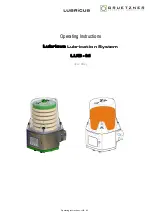
Telephone operation (Phone)
59
111.5U6.N
31.23
SOS and emergency call functions may not
be displayed in all devices and may not be
available in all countries via all phone service pro-
viders.
Please note the instructions given in the mo-
bile phone's and accessories' user manuals
as well as any laws or regulations pertaining to the
use of hands-free headsets.
Reception interference and call interrup-
tions may occur in dead spots.
Most electrical devices are shielded against
RF (high-frequency) signals. In some rare
cases, however, electronic devices may not be
shielded against the mobile phone package's RF
signals. Interference may occur.
Places with special regulations
Please first read and note the introductory
information and heed the WARNINGS
on page 58.
Switch the mobile phone and mobile phone
package off at explosion-prone locations! These
locations are often, but not always, identified
clearly
⇒
in
Introduction
on page 58. These in-
clude, for example:
•
Vicinity of pipes and tanks containing chemi-
cals.
•
Lower decks of ships and ferries.
•
Vicinity of vehicles powered by liquefied petro-
leum gas (such as propane and butane).
•
Areas with chemicals or particles in the air,
such as flour, dust or metal powder.
•
All other locations where the vehicle engine
must be switched off.
WARNING
Switch the mobile phone off at explosion-prone
locations! The mobile phone will automatically
connect to the mobile network when the Blue-
tooth connection to the mobile phone package is
disconnected.
Note
In areas with special regulations relating to or
prohibiting the use of mobile phones, the mobile
phone and the mobile phone package or the PRE-
MIUM mobile phone package must be switched
off. Radiation from a switched-on mobile phone
can interfere with sensitive technical and medical
devices, potentially causing malfunctions or
damage to the devices.
Using a mobile phone without a connection to the outside antenna
Please first read and note the introductory
information and heed the WARNINGS
on page 58.
Mobile or cellular telephones send and receive
radio waves both when they are being used and
when they are in stand-by mode. Current scientific
literature indicates that radio waves that exceed a
certain level can have effects on the human body.
Limits and guidelines have been established by
governmental authorities and international com-
mittees in an effort to keep the electromagnetic ra-
diation from cellular phones at levels that will not
cause health problems. However, there is no scien-
tifically based proof that wireless phones are abso-
lutely safe.
Therefore, some experts recommend a precau-
tionary approach regarding the use of cellular
phones by taking measures that lower the per-
sonal exposure to electromagnetic fields.
When using a cellular telephone inside a motor ve-
hicle without a proper connection to an integrated
vehicle telephone antenna, the personal exposure
to electromagnetic fields will be higher than when
using the cellular telephone while properly con-
nected to an integrated or other outside vehicle
telephone antenna.
Your vehicle may be equipped with an optional
hands-free system that will permit many of the
features of a cellular telephones to be used for
greater convenience and consistent with the laws
of an increasing number of states and localities
that prohibit the use of cellular telephones
without some kind of hands-free device.
The factory-installed hands-free equipment is de-
signed for use with common cell phones and Blue-
58
Navigationssystem_111.5U6.N31_23.book Seite 59 Donnerstag, 22. April 2010 5:16 17
















































